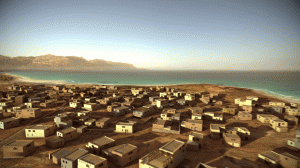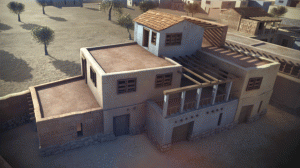October 14, 2011, by Jon Henderson
Bringing a 3600 year old city back to life
The Pavlopetri documentary we have been working on over the past year came out on BBC 2 on 8pm Sunday night (repeated on Wednesday 11.20pm). I hadn’t seen the final cut so I watched it for the first time along with everyone else with some nervousness – would I still have an academic career at the end of this? I needn’t have worried, the director Paul Olding managed to get the right balance of truth and interpretation to keep it interesting and yet still get the basic archaeological story across. Overall it was great to see maritime archaeology of prime time television and lets hope it encourages the BBC to feature some other projects.
If you were one of the 15 million people watching X-Factor on Sunday (shame on you!) and haven’t seen the documentary yet it is available on the BBC iPlayer for another 5 days – www.bbc.co.uk/pavlopetri . There’s also a BBC History podcast you can download at www.historyextra.com/podcast-page. You can also read a short article on the site I wrote for the BBC news website at http://www.bbc.co.uk/news/magazine-15191614.
For me it was amazing to see the CGI reconstructions of the site in all their glory on Sunday night. One of the primary aims of the Pavlopetri project has been to record the site in as much detail as possible. We have used just about every possible acoustic and digital maritime survey technique on the site. One of the most impressive is the stereo-photogrammetry robot developed by the Australian Centre for Field Robotics at Sydney University which we used to record the entire city stone by stone in photo-realistic 3D. Having the BBC onboard allowed us to have movie industry CGI specialists from Prime Focus to be part of the research team in the field. They worked alongside us each day – I think this is one of the first times this has been done – and it allowed us to build realistic reconstructions of all of the buildings directly on to our archaeological survey data. This was wasn’t just an artist’s impression but a data driven reconstruction. Now the programme has aired we plan to get a version of the CGI model up on the website so people can start exploring the city themselves. The CGI company, Prime Focus (www.primefocusworld.com ), have given us the data – now all I need to is find a computer at the University which is big enough to work with it as we need a machine with at least 24 gigabytes of RAM!
Thanks to everyone who has sent me an email asking about the programme – I received over 200 and I will get round to answering them all by the weekend! I received a lot of interesting questions about Atlantis and other submerged sites which I will also cover in my blog over the coming weeks.
Finally, I see that the treasure hunting company Odyssey Marine announced they have found ANOTHER British wreck carrying silver worth £12 million, lying in much shallower water only 100 miles from their previous find (http://www.dailymail.co.uk/news/article-2047550/Silver-streak–exploration-team-finds-ANOTHER-sunken-British-ship-19m-aboard.html ). They have the same salvage deal arranged with the UK government as for the SS Gairsoppa. Odyssey shares rose 14% to $3 in premarket trade on word of this discovery. Funny how these discoveries appear just when Odyssey are about to go bankrupt. Timing is everything on the stock markets.




An interesting dialogue is value comment. I feel that it is best to write more on this subject, it may not be a taboo subject however usually people are not sufficient to speak on such topics. To the next. Cheers
I’m shocked, I have to say. Really seldom can i encounter a blog that’s both educative and entertaining, and let me tell you, you have hit the nail on the head. Your current thought is actually outstanding; the problem is something not enough people are speaking wisely about. I will be very happy that I found this with my try to find something about it.
City looks beautiful, do you have some video clips of this?
All best,
A.A.
Rather late (over a year)in discovering this amazing programme. Brilliantly done with amazing reconstruction. More power to your talents, sir